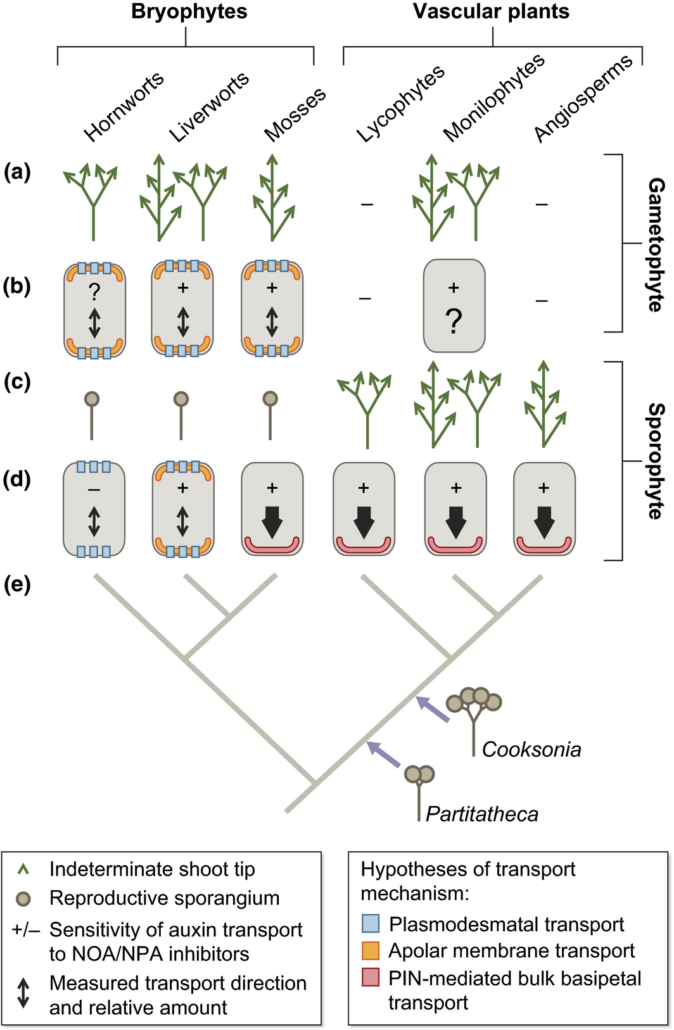
Review: Evolutionary perspective on auxin’s role in shoot branching
Plant Science Research Weekly, Research0 Comments
/
Shoot branching increases the photosynthetic surface area and the points at which reproductive structures can form. In angiosperms, auxin (specifically, auxin depletion) has been shown to be involved in the initiation and outgrowth of shoot branches. For example, in apical dominance the primary shoot…

Review: Endosperm and Imprinting
Plant Science Research Weekly, Research"The endosperm is often viewed as a complicated and rather strange tissue" begins this review by Gehring and Satyaki. They go on to describe that the endosperm is the site of expression of imprinted genes, which are genes that are expressed soley when inherited from the mother or father. The authors…
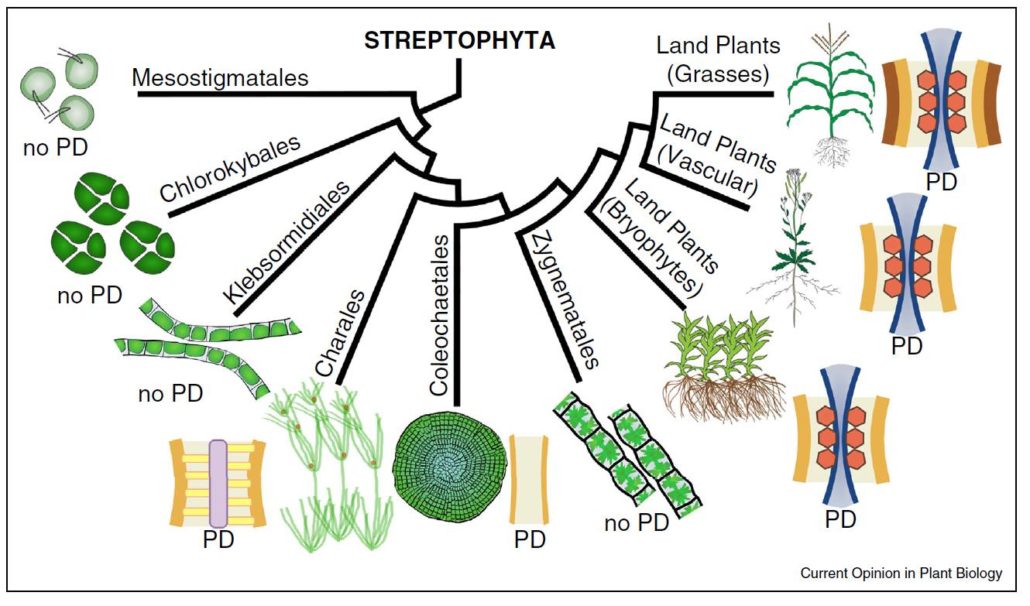
Review: Plasmodesmata, pores between cells ($)
Plant Science Research Weekly, ResearchThe cytosol of most plant cells are connected by plasmodesmata, tiny channels that form bridges between adjoining cells (guard cells notably lack plasmodesmatal connections). Water, ions, small molecules, proteins and viruses can move through plasmodesmata. Upon wounding or infection, plasmodesmatal…

Molecular basis for plant growth responses in shade and under competition for light ($)
Plant Science Research Weekly, Research
The wavelenghts of light perceived by a plant are information-rich, and plants integrate information from photoreceptors tuned to different wavelenghts to optimize their growth and development. Because plants absorb red light but not far-red light, a low ratio of red to far-red light indicates vegetative…
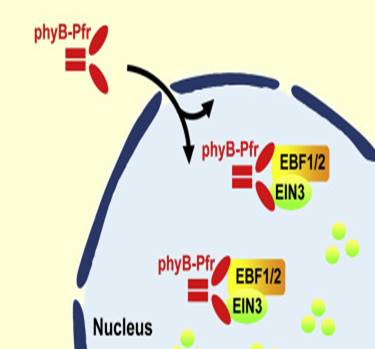
Light suppresses ethylene response by direct interaction between phyB and EIN3
Plant Science Research Weekly, Research
A seedling in the dark produces ethylene, which in a dicot such as Arabidopsis leads to apical hook formation that protects the cotyledons from damage as the seedling pushes through the soil. The emergence of the seedling into the soil causes a rapid transition to photomorphogenesis and a suppression…
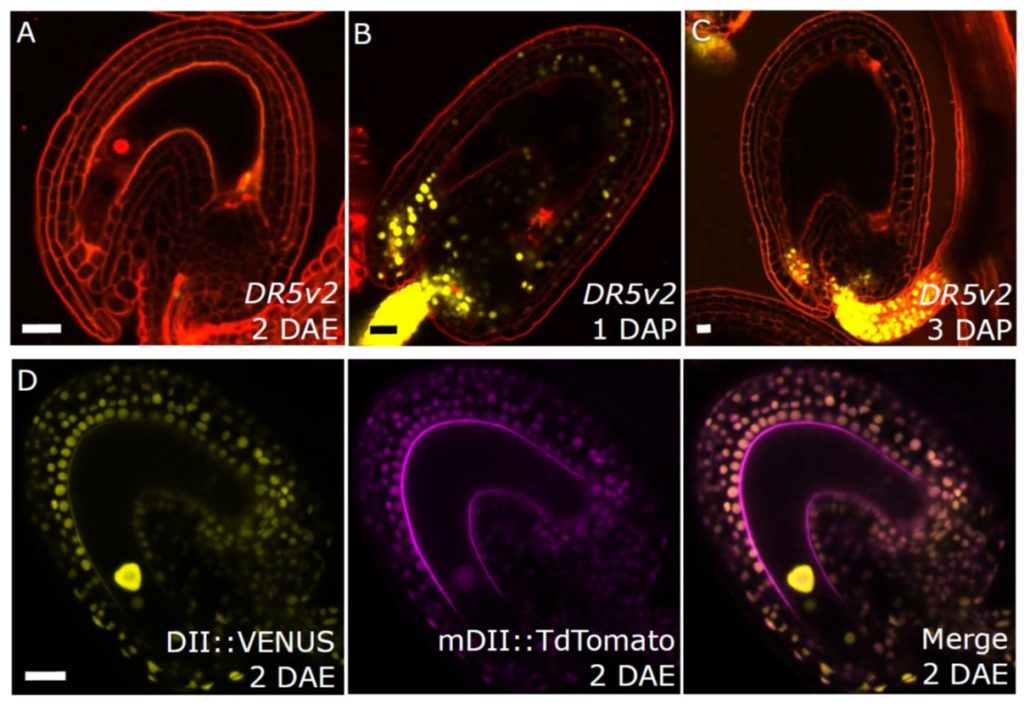
Auxin production in the endosperm drives seed coat development in Arabidopsis
Plant Science Research Weekly, Research
Seed vitality is critical for plants’ evolutionary survival and food production by economic crops such as rice, wheat, etc. Seed formation is preceded by well-coordinated events involving mainly fertilization, endosperm and seed coat formation in chronological order. How is the signal relayed from…
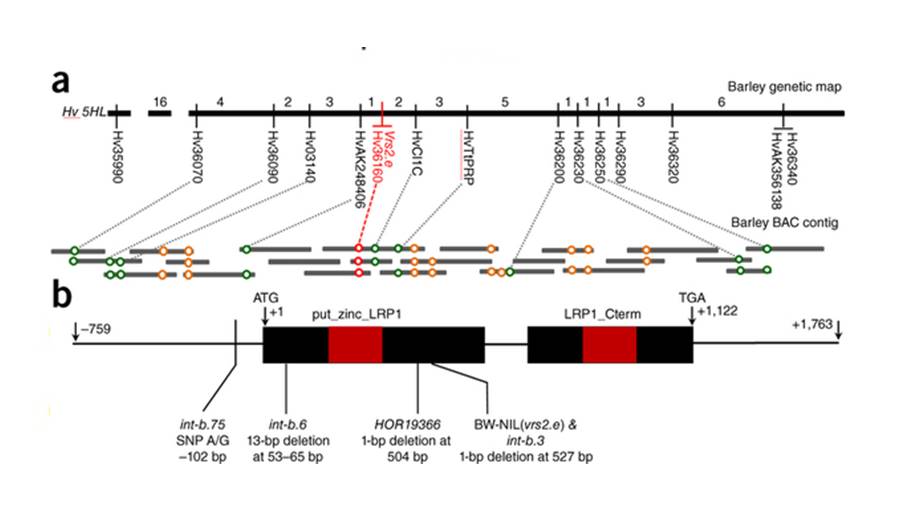
Hormone-mediated inflorescence patterning in barley ($)
Plant Science Research Weekly, ResearchYoussef et al. investigate how the vsr2 mutant affects inflorescence (spike) development in barley. In the two-row variety, at each node there are two sterile spikelets and a single grain forms. In the six-row variety, each of the spikelets is fertile and three grains form at each node. The vsr2 mutation…

Review: Programmed Cell Death in Development and Disease
Plant Science Research Weekly, Research
Programmed cell death (PCD) is an active process that occurs as part of normal development and also contributes to defense against pathogens. While there are many similarities in developmental PCD (dPCD) and pathogen-triggered PCD (pPCD), there are also differences. Huysmans et al. review and contrast…

A Breakthrough in Monocot Transformation Methods
Research, The Plant Cell, The Plant Cell: In Brief
IN BRIEF by Nancy Hofmann [email protected]
The ability to generate transgenic plants without regard to cultivar or genotype can be considered a holy grail of cereal crop transformation. Despite years of effort, it has been remarkably difficult to develop efficient methods for transformation of…

